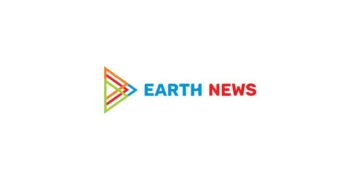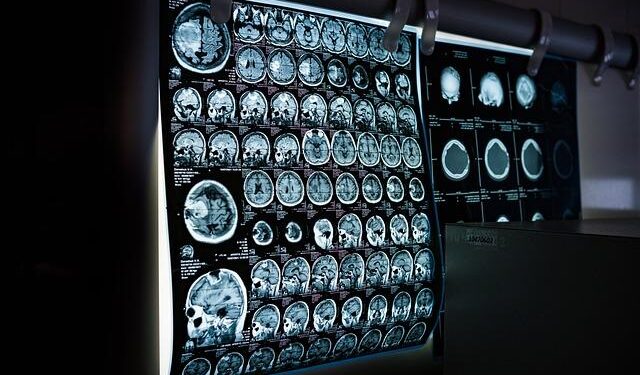In the ever-evolving landscape of television narratives, few series have sparked as much intrigue and conversation as “Severance.” With its chilling exploration of memory, identity, and the blurred lines between work and personal life, the show has captured the imagination of viewers and critics alike. At the heart of its enigmatic premise lies the concept of “innies” and “outies”—the terms that denote the split between employees’ professional personas and their true selves. To unpack the complex science behind this segmentation of consciousness, we turn to expert insights from a consulting neurosurgeon affiliated with the Severance project. In this article, we delve into the fascinating intersection of neuroscience and narrative, exploring how real-world science informs the show’s fictional conceits and what it might mean for our understanding of the self in an age dominated by work-centric lifestyles. Join us as we uncover the layers of intrigue behind “Severance” and the riveting science that spurred its creation.
Exploring the Neuroscience Behind Innies and Outies

The science of body types, particularly the intriguing distinction between innies and outies, delves deep into the brain’s intricate wiring and the way our perceptions shape our physical responses. Neuroscience researchers are now uncovering how individual differences in brain structure and function may correlate with the very way we present ourselves. Innies, often perceived as introverted or reserved, may have a brain composition that leans towards heightened activity in areas responsible for social information processing, while outies, exhibiting extroversion and openness, may have enhanced connectivity in regions linked to impulsivity and spontaneity.
To understand these phenomena better, let’s consider the various factors at play in the brain’s architecture that might influence our body types:
- Genetic Predispositions: Individuals may inherit certain traits that profoundly influence both personality and physical expression.
- Neural Pathways: The connections between different brain areas can dictate how we process our identity and interact with the world around us.
- Environmental Influences: Life experiences and upbringing can shape how these neural circuits develop, supporting diverse expressions of self.
As we continue to explore this topic, it is also valuable to examine how these personality traits interact with neurological health. The table below highlights some interesting correlations found in recent studies:
| Body Type | Common Traits | Neurological Correlation |
|---|---|---|
| Innie | Reserved, contemplative | Increased gray matter in the prefrontal cortex |
| Outie | Social, adventurous | Enhanced connectivity involving the limbic system |
Ultimately, the journey into the neuroscience behind innies and outies reveals not only the complexity of human behavior but also the fascinating interplay between mind, body, and identity. By examining how our brain’s structure influences our physicality, we can gain deeper insights into the nuances of what it means to inhabit a particular social role and how that role reflects our personal narrative.
The Impact of Severance’s Innovative Consulting on Brain Health

The world of brain health is rapidly evolving, and innovative consulting approaches are at the forefront of these developments. Severance’s consulting team focuses on breaking down complex neurological issues into understandable concepts, making groundbreaking research accessible to both medical professionals and patients. By employing a blend of cutting-edge technology and evidence-based practices, they are redefining how we interpret brain health, emphasizing the importance of personalized care tailored to individual needs.
One standout feature of Severance’s consulting methodology is its emphasis on the intricate relationship between neurological function and overall well-being. The team utilizes advanced neuroimaging tools to assess brain structure and function, allowing for an in-depth understanding of conditions such as traumatic brain injury, stroke, and degenerative diseases. Through interactive workshops and seminars, patients and their families are empowered with knowledge, enabling them to take proactive steps towards maintaining their brain health.
Severance also aims to foster a collaborative environment, where multidisciplinary teams come together to share insights and devise comprehensive care strategies. This initiative has yielded significant benefits, including improved treatment outcomes and higher patient satisfaction rates. By actively engaging with the community and leveraging data from clinical outcomes, they continue to push the boundaries of what’s possible in neurosurgery and brain health management.
| Innovative Approaches | Impact on Patients |
|---|---|
| Neuroimaging Technology | Enhanced understanding and diagnosis of neurological conditions |
| Workshops & Seminars | Increased patient empowerment and proactive health management |
| Multidisciplinary Teams | Improved collaboration leading to better treatment strategies |
Expert Insights: Strategies for Navigating Innate Personality Traits

Understanding personality traits—often categorized as “innie” or “outie” types—can significantly enhance personal and professional interactions. Severance’s consulting neurosurgeon emphasizes the importance of self-awareness in recognizing one’s innate tendencies. By identifying whether you lean towards introversion or extroversion, you can tailor your approach to various situations, enhancing both communication and collaboration. Here are some effective strategies:
- Self-Reflection: Engage in regular introspection to better understand your reactions and preferences.
- Adaptability: Learn to modify your behavior based on your environment and the needs of those around you.
- Active Listening: Practice listening more than speaking, a particularly valuable strategy for “outies” to balance their interactions.
Another critical tactic involves leveraging one’s strengths while mitigating weaknesses. For instance, “innies” might excel in deep thinking and problem-solving but could struggle with social interactions. On the other hand, “outies” often thrive in energetic environments but may benefit from grounding techniques during overwhelming social moments. Here’s a simple comparison of strengths and strategies:
| Type | Strengths | Strategies for Balance |
|---|---|---|
| Innie | Deep analytical skills, thoughtfulness | Set specific social goals to gradually increase engagement |
| Outie | High energy, sociability | Incorporate quiet moments for self-reflection |
Lastly, embracing the spectrum between introversion and extroversion can lead to greater empathy and understanding in interpersonal relationships. By recognizing that everyone has varying levels of comfort in different scenarios, individuals can cultivate more inclusive environments. Engaging in diverse group activities or networking events allows both personality types to thrive, creating balanced experiences that support collaboration and connectivity.
Recommendations for Enhancing Neuroplasticity in Everyday Life
To enhance neuroplasticity in your daily routine, consider engaging in new and challenging activities. Activities that require skill development, such as learning a musical instrument, mastering a new language, or participating in a sport, stimulate the brain and foster new neural connections. Incorporate a variety of tasks to keep your brain agile and adaptable. Some effective methods include:
- Playing a musical instrument: Not only does this enhance auditory skills, but it also promotes emotional expression.
- Learning a new language: This improves cognitive flexibility and memory.
- Practicing memory games: Engage your brain with puzzles and challenges that require critical thinking.
Another effective approach to support neuroplasticity is through physical exercise. Regular physical activity increases blood flow to the brain, delivering essential nutrients and oxygen. This not only directly benefits brain health but also aids in the release of neurotrophic factors, which promote the growth of new neurons. Activities to consider include:
- aerobic exercises: Like jogging, cycling, or swimming, all of which enhance cardiovascular health.
- strength training: To build muscle and improve overall physical resilience.
- yoga and meditation: For stress reduction and increased mindfulness, which can enhance brain function.
consider incorporating mindfulness and mental exercises into your daily life. Practices such as meditation, deep-breathing exercises, and visualization can enhance cognitive capabilities and emotional resilience. Participate in activities that promote relaxation and mental clarity. Embrace habits that cultivate a growth mindset, leading to improved learning outcomes. Here are some useful techniques:
- Daily meditation: Just a few minutes daily can significantly improve focus and reduce stress.
- Journaling: Writing about your experiences fosters reflection and deeper cognitive processing.
- Mindful walking: Combining movement with focused attention can enhance your sensory awareness.
Closing Remarks
In the intricate interplay of neuroscience and corporate culture, “Severance” has ignited conversations that transcend the boundaries of fiction. With insights from consulting neurosurgeon Dr. [Name], we’ve delved into the fascinating realm of “innies” and “outies” — a thought-provoking metaphor for our own cognitive boundaries and identities in the workplace. As we navigate a world where the line between professional obligations and personal well-being continues to blur, the questions posed by the series resonate more profoundly than ever. As we reflect on the implications of separating self from duty, we invite readers to ponder: What does true autonomy mean in an age where our minds can be so easily partitioned? Whether you’re a fan of the show or a curious observer of the cultural zeitgeist, one thing is clear: the dialogue surrounding “Severance” is just beginning. Keep the conversation alive, and let’s explore the myriad ways our minds shape our experiences—both on-screen and off.





















![Forest ecology cannot be reduced to arithmetic, says M.I. Varghese [Interview] – Mongabay-India](https://earth-news.info/wp-content/uploads/2025/12/328946-forest-ecology-cannot-be-reduced-to-arithmetic-says-mi-varghese-interview-mongabay-india-120x86.jpg)









